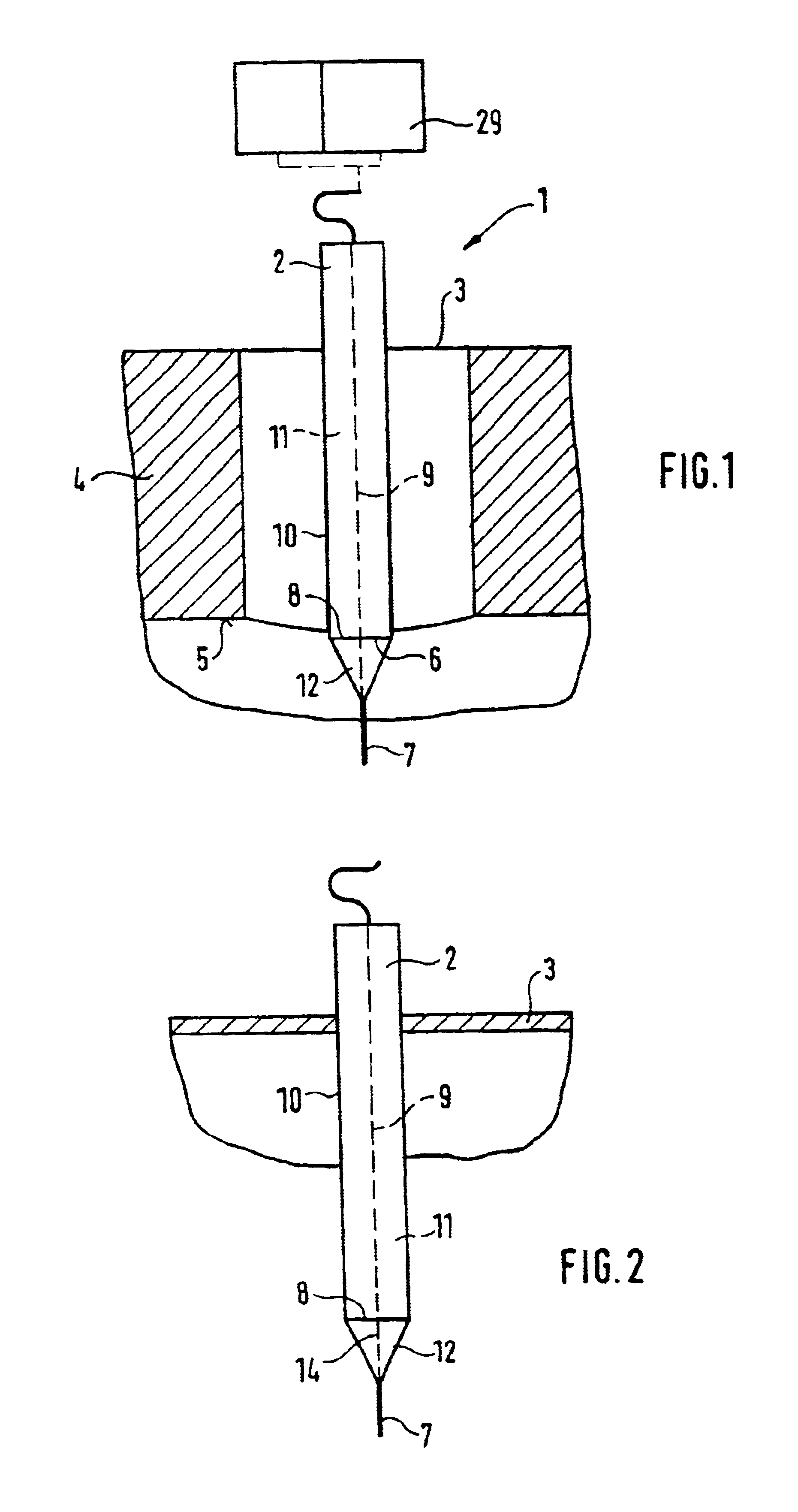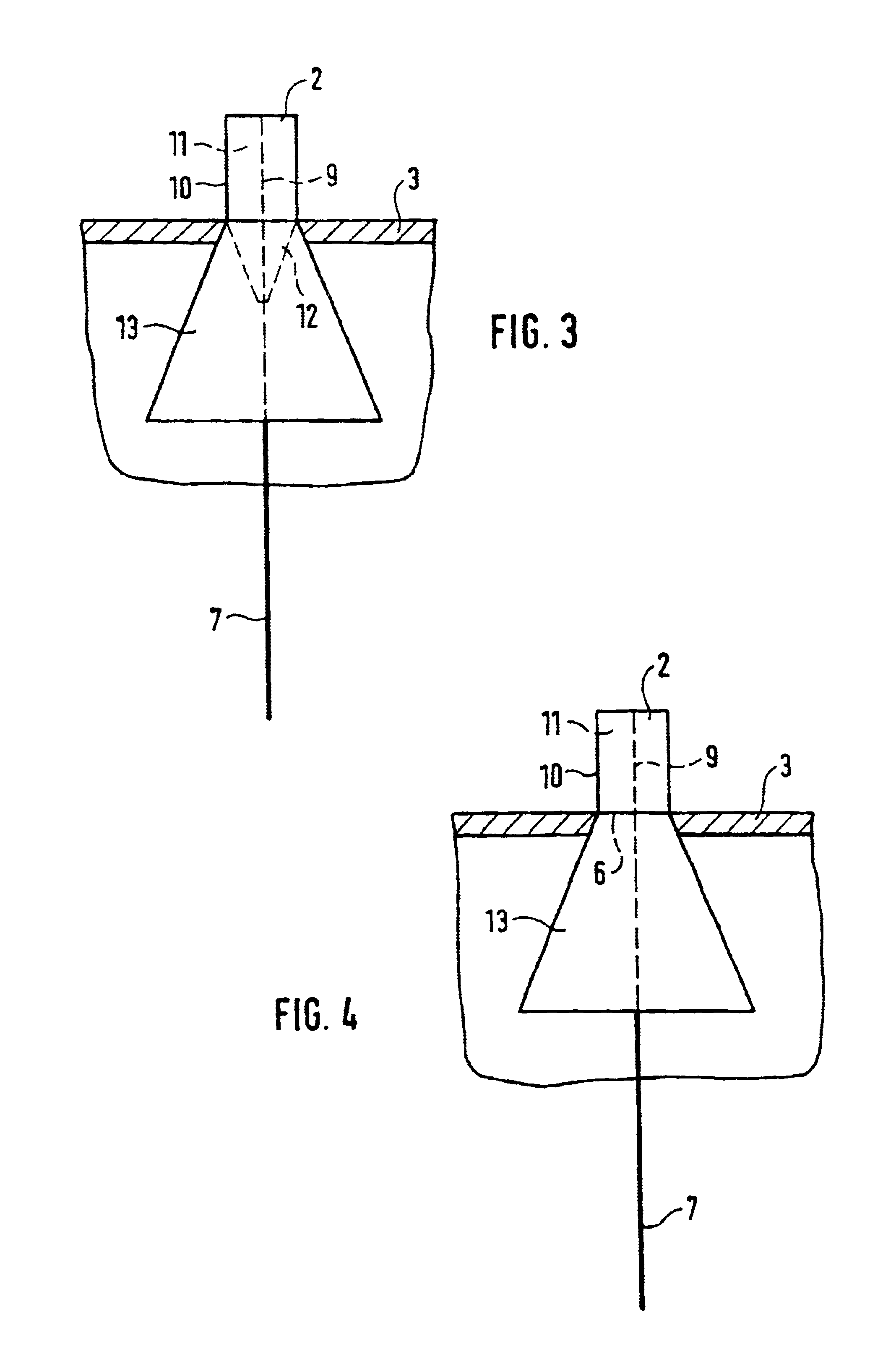Device for determining the level of contents in a container
a technology for determining and monitoring the level of contents in containers, applied in the direction of liquid/fluent solid measurement, engine lubrication, antennas, etc., can solve the problems of transverse resonance, interfering echo signal, so strong, etc., and achieve the effect of reducing the field length, improving the directional action, and effectively increasing the apertur
- Summary
- Abstract
- Description
- Claims
- Application Information
AI Technical Summary
Benefits of technology
Problems solved by technology
Method used
Image
Examples
first embodiment
FIG. 1 is a schematic illustration of the level sensor 1 of the invention. The level sensor comprises a transceiver 29, a coaxial cable, an input unit 2, and a conductive element 7. The evaluation of the echo signals is done in an evaluation unit, not shown separately in FIG. 1.
second embodiment
In the case shown, the input unit 2 has a length that is greater than the length of the connection stub 4. The input unit 2 is disposed such that the opening 8 is in the vicinity of—in this case, below—the lower edge 5 of the connection stub 4. It is understood that the opening 8 can also be placed above the lower edge 5. Moreover, the opening 8 in the input unit 2 is dimensioned such that it is on the order of magnitude of the wavelength of the measurement signals guided by the level sensor 1. To a very great extent, the embodiment according to the invention prevents components of the measurement signals from entering the connection stub 4. Consequently, virtually no void resonances are excited, which is expressed in a considerable improvement in the measuring accuracy of the level sensor 1. In the case shown, the three-dimensional region between the inner conductor 9 and the outer conductor 10 is furthermore filled with a dielectric material 11. The advantages of this embodiment h...
third embodiment
A schematic illustration of the device of the invention can be seen in FIG. 3. Here, the transition region 6 between the input unit 2 and the conductive element 7 is disposed such that it is located virtually in the plane of the container wall 3. The input unit 2 has an inner conductor 9 and an outer conductor 10. Between the two parts, a dielectric material 11 is disposed. The dielectric material 11 of the input unit 2 is tapered, approximately from the transition region 6“input unit 2—conductive element7” onward, and an upper portion of the conductive element 7 is disposed approximately in the region of the longitudinal axis of the taper 12. As the primary advantages of this embodiment, the excellent directional action, the short block distance, and the reduced risk of deposit formation can be named. To improve the directional action still further, the outer conductor 13 is widened, from the transition region 6“input unit 2—conductive element 7” onward, into a horn-shaped element ...
PUM
 Login to View More
Login to View More Abstract
Description
Claims
Application Information
 Login to View More
Login to View More - R&D
- Intellectual Property
- Life Sciences
- Materials
- Tech Scout
- Unparalleled Data Quality
- Higher Quality Content
- 60% Fewer Hallucinations
Browse by: Latest US Patents, China's latest patents, Technical Efficacy Thesaurus, Application Domain, Technology Topic, Popular Technical Reports.
© 2025 PatSnap. All rights reserved.Legal|Privacy policy|Modern Slavery Act Transparency Statement|Sitemap|About US| Contact US: help@patsnap.com



